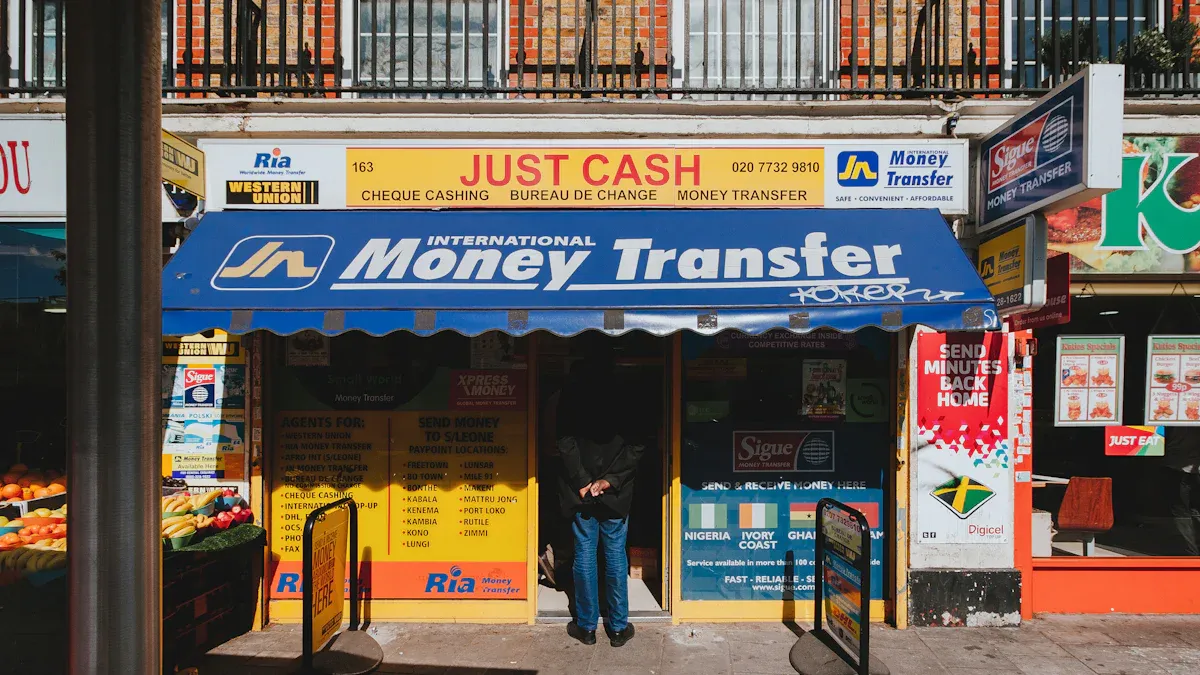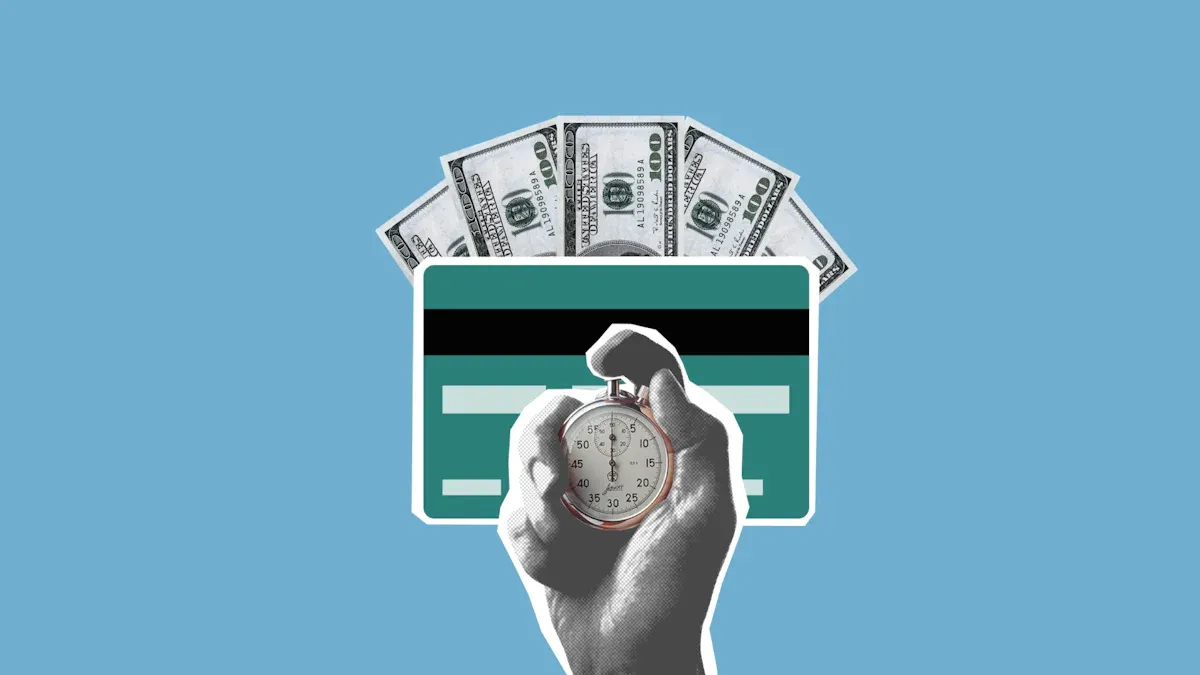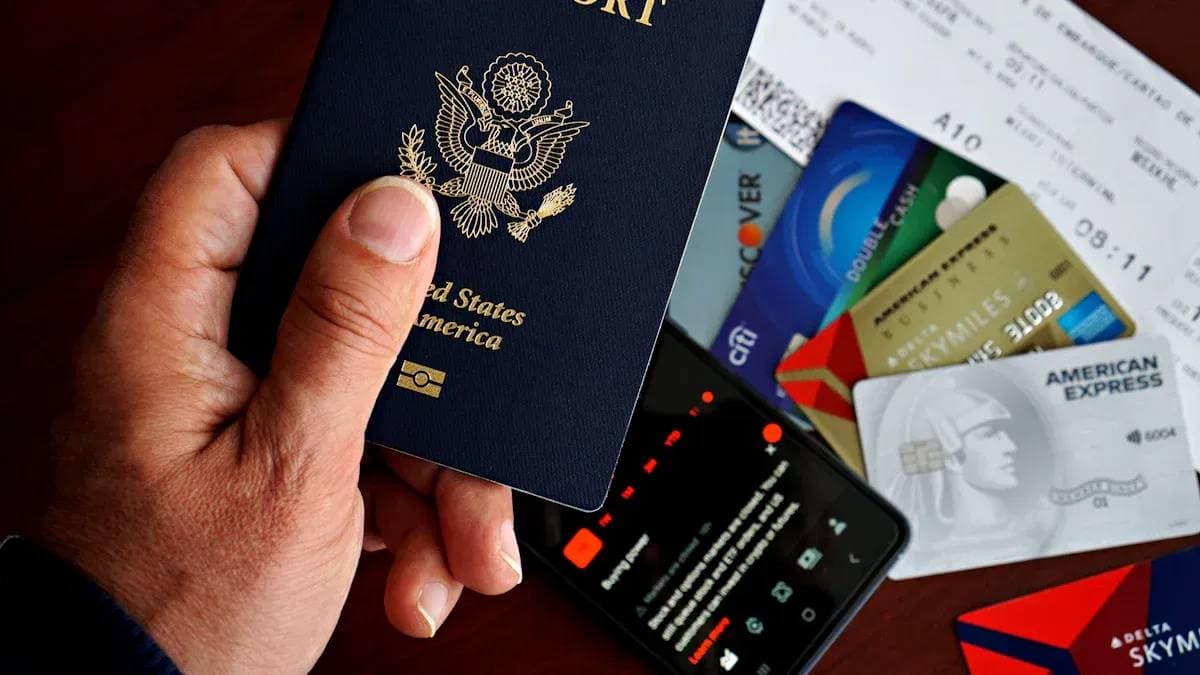- EasyCard
- Trade
- Help
- Announcement
- Academy
- SWIFT Code
- Iban Number
- Referral
- Customer Service
- Blog
- Creator
How to Choose a Money Transfer Platform: Comprehensive Comparison of Speed, Fees, and Security

Image Source: unsplash
When choosing a money transfer platform, you may face multiple options. For daily transfers in mainland China, Alipay and WeChat Pay are the comprehensive top choices. These two platforms together occupy more than 90% of digital transaction volume in mainland China, forming a duopoly situation. However, when handling large amounts, corporate, or cross-border transactions, bank apps or professional platforms like Payoneer have their own advantages.
When conducting transfer speed comparison tests, you will find that different platforms perform differently in handling specific businesses, and choosing the tool that best suits your needs is crucial.
Key Points
- When choosing a transfer platform, you need to consider speed, fees, security, and convenience.
- In mainland China, Alipay and WeChat Pay are suitable for daily small transfers, with fast speeds and simple operations.
- For international transfers or large transactions, bank apps and professional platforms like Payoneer are more reliable.
- Cryptocurrency transfers are fast and low-cost, but you need to bear the risks yourself.
- Carefully verify information before transferring, be vigilant against scams, and protect your fund security.
Platform Transfer Speed Comparison Test and Core Indicator Analysis

Image Source: pexels
When choosing a transfer platform, speed, fees, security, and convenience are the four most critical considerations. Different platforms vary in these aspects, and no platform is optimal in all scenarios. To help you make informed choices, we conducted a comprehensive transfer speed comparison test and deeply analyzed various core indicators.
To give you an intuitive understanding of major mainstream platforms, we first organized the following comparison table:
| Platform | Transfer Speed | Main Fees (USD) | Security Rating | Convenience |
|---|---|---|---|---|
| Alipay | Seconds to arrive | 0.1% after exceeding $2,800 withdrawal limit | ★★★★★ | Limited to mainland China users, extremely simple operation |
| WeChat Pay | Seconds to arrive | 0.1% after exceeding $140 withdrawal limit | ★★★★★ | Limited to mainland China users, strong social attributes |
| Bank App | Real-time or within 2 hours | Possible fees for inter-bank or large amounts | ★★★★★ | Slightly cumbersome process, covers bank users |
| PayPal | Instant arrival | Withdrawal/currency conversion fees 3%-4.5% | ★★★★☆ | Over 200 countries and regions globally |
| Payoneer | 1-3 business days | Free between accounts, withdrawal/conversion fees 0.5%-2% | ★★★★☆ | Preferred for business receipts, wide coverage |
| MoneyGram | 5-10 minutes | Tiered fees by amount | ★★★★☆ | Many offline outlets, extremely fast |
| Biyapay | Crypto seconds, fiat T+0 | Transaction fee 0.1%, low withdrawal rates | ★★★★☆ | Supports multi-currency fiat and crypto exchange |
| USDT-TRC20 | Seconds to minutes | About $0.01-$1 | ★★★☆☆ | Fast speed, low fees, self-bearing risks |
| USDT-Omni | 10-30 minutes | About $5-$10 | ★★★☆☆ | Based on Bitcoin network, higher security |
Speed Showdown: From Seconds to Business Days
Transfer speed directly affects your fund usage efficiency. Speed differences across platforms are huge, ranging from seconds to several business days.
- Instant Arrival Tier: In mainland China, personal transfers via Alipay and WeChat Pay are almost always in seconds. For urgent small fund turnovers, they are irreplaceable choices. In the international remittance field, MoneyGram performs outstandingly, usually completing cross-border remittances in 5 to 10 minutes.
- Minute-Level Arrival Tier: Cryptocurrency transfers are another speed-pursuing option. USDT-TRC20 based on the TRON network typically confirms in seconds to minutes. In contrast, USDT-Omni based on the Bitcoin network requires longer confirmation times, usually 10 to 30 minutes, and may even take over an hour during network congestion.
- Business Day Arrival Tier: Traditional bank wire transfers and some cross-border payment platforms, like Payoneer, typically take 1 to 3 business days to process funds. This is mainly due to compliance reviews and multiple intermediary bank processes. Though slower, this method is more standardized for large commercial payments.
The transfer speed comparison test results we conducted show that scenario needs are key to speed selection.
Fee Deep Dive: Boundaries Between Free and Paid
“Free” is a slogan many platforms use to attract users, but there is no free lunch. You need to carefully distinguish the boundaries of free services and hidden fees.
Fee Structure Tip International payment platform fees are usually complex, generally including fixed fees, percentage fees, and currency conversion fees. When calculating total costs, you need to consider all these items.
- Mainland China Platforms: Alipay and WeChat Pay are free for transfer functions, but withdrawing balance to bank cards incurs fees. Alipay provides a lifetime $2,800 USD free withdrawal limit, while WeChat Pay’s free limit is only $140 USD. Exceeding parts are charged 0.1% service fee by both.
- International Payment Platforms: PayPal and Payoneer’s fee structures are more diverse. For example, transferring Payoneer account balance to another Payoneer account is free, but withdrawing to bank accounts or involving currency conversion incurs 0.5% to 2% varying fees. PayPal’s currency conversion rates are higher, usually 3% to 4%, significantly increasing costs in small transactions.
- Cryptocurrency Platforms: Cryptocurrency transfer fees (i.e., “miner fees” or Gas fees) depend on the network used. USDT-TRC20 transaction fees are extremely low, usually just a few cents. USDT-Omni, using the Bitcoin network, has much higher fees. Comprehensive platforms like Biyapay typically have transaction fees around 0.1%, offering relatively transparent and competitive rates.
Security Rating: Protection of Funds and Information
Fund security is the bottom line for transfers. Platform security is mainly reflected in regulatory compliance and technical strength.
- Regulation and Compliance: In mainland China, Alipay and WeChat Pay both hold payment licenses issued by the People’s Bank of China (PBOC) and connect to the central bank’s UnionPay clearing platform, subject to strict regulation. Similarly, international platforms like PayPal and Payoneer must obtain permissions to enter the mainland China market and comply with local anti-money laundering regulations. Choosing platforms with formal licenses is the first step to ensuring fund security.
- Technical Protection: Mainstream bank apps and payment platforms generally adopt multiple security measures.
- Data Encryption: All data transmitted between your device and platform servers is encrypted to prevent hacking.
- Two-Factor Authentication (2FA): During login or transfer, besides passwords, platforms require a second verification method, such as SMS verification codes, fingerprints, or facial recognition. This greatly enhances account security.
- Protocol Risks: For cryptocurrency transfers, you also need to pay attention to the security of the underlying protocol. For example, the USDT smart contract was audited by security agencies and found to have some low-risk vulnerabilities, such as excessive owner permissions, possible mistaken transfers to zero addresses, etc. Users must bear such protocol-level risks themselves.
Comprehensive transfer speed comparison tests not only focus on time but must prioritize security.
Convenience Experience: Operation and Coverage
A good transfer platform must be fast, cheap, and easy to use. Operational simplicity and service coverage determine platform convenience.
- Operation Process: Alipay and WeChat Pay have very concise user interface designs, aligning with mainland China user habits, completing transfers in a few steps. In contrast, bank app processes are usually more rigorous and complex. International platforms like PayPal and Payoneer, though powerful, may require time to familiarize with account setup and receipt processes on first use.
- Coverage: This is key to distinguishing platforms. Alipay and WeChat Pay mainly serve the mainland China market. PayPal’s service network covers over 200 countries and regions globally, a common tool for personal cross-border shopping and receipts. Payoneer focuses more on B2B commercial receipts, favored by global freelancers and cross-border e-commerce sellers. Emerging platforms like Biyapay aim to bridge fiat and cryptocurrency worlds, allowing multi-asset exchange and transfers in one app.
Overall, no platform is universal. Through this transfer speed comparison test and multi-dimensional analysis, you can more clearly understand each platform’s characteristics, making the best choice in different scenarios.
Scenario-Based Practice: Which Transfer Method Suits You Best
Theoretical analysis provides a foundation, but actual operation choices are often more complex. You need to weigh speed, fees, and convenience based on specific transfer scenarios. Below, we delve into four typical scenarios to help you find the most suitable transfer method.
Scenario One: Daily High-Frequency Payments in Mainland China
If you live in mainland China, for daily high-frequency small payments like eating, shopping, and friend transfers, Alipay and WeChat Pay are undoubtedly the best choices.
- Core Advantages: Ultimate speed and convenience. As shown in our previous transfer speed comparison test, personal transfers on these platforms are almost always in seconds. You only need a phone number or QR code scan to complete payment, with extremely simplified processes.
- Limit Considerations: For daily use, their limits are fully sufficient. For example, Alipay’s daily inter-account transfer limit usually meets most personal needs. Though mainly serving mainland China, some international versions provide small payment convenience for eligible overseas users.
Selection Advice In mainland China, treat Alipay and WeChat Pay as your “digital wallets.” They are deeply integrated into social and life services, default options for daily transactions.
Scenario Two: International Remittances and Commercial Receipts
When your business involves cross-border transactions, choices diversify, with cost and efficiency as key considerations.
- Freelancers and Cross-Border E-Commerce: If you are a freelancer or e-commerce seller, Payoneer is a powerful tool.
- Wide Platform Integration: You will find global mainstream freelance platforms like
Upwork,Fiverr, and e-commerce platforms likeAmazon,eBay, andWalmart Marketplaceall support direct receipts via Payoneer. - Fee Advantages: Payoneer’s currency conversion fees are usually 0.5% to 3.5%, while PayPal’s rates can reach 3% to 4%. When receiving USD and converting to other currencies, Payoneer saves considerable fees. It supports receiving USD, EUR, GBP, etc., like a local bank, effectively reducing receipt costs.
- Wide Platform Integration: You will find global mainstream freelance platforms like
- Large, Corporate Commercial Payments: For huge amounts or payments to company bank accounts, traditional bank international wire transfers remain irreplaceable.
- Reliable and Direct: Wire transfers via mature bank networks like SWIFT go directly to the recipient’s bank account. Recipients need no third-party platform registration, just a bank account.
- Applicability: Ideal for supplier payments and other large, time-sensitive commercial payments, helping maintain good business relations. But carefully verify recipient information, as wire transfers cannot be revoked once sent.
- Flexible Comprehensive Solutions: For businesses or individuals handling both fiat and crypto, emerging platforms like Biyapay offer new choices. They break barriers between assets, allowing multi-currency fiat and crypto exchange and transfers in one app, providing great flexibility for international business.
Scenario Three: Urgent Fund Turnover Needs
When facing urgent fund needs, transfer speed is the top priority. You need a fast and reliable channel.
- Small Urgent Transfers (Mainland China): Alipay and WeChat Pay’s second-level arrival makes them top choices for small urgent turnovers.
- Large Urgent Transfers: When amounts exceed third-party payment limits, turn to bank apps.
- Mainland China bank apps via the Internet Banking Payment System (IBPS) handle single transactions up to about $140,000 USD, meeting most urgent large needs.
- For international urgent large payments, bank wire transfers are ideal for fast, secure fund transfer. Our transfer speed comparison test shows that though wire transfers take business days, their efficiency and security in large transactions are unmatched.
Operation Tip Many licensed Hong Kong bank mobile apps offer “Faster Payment System (FPS)” service, supporting instant HKD or RMB cross-bank transfers, very suitable for urgent fund mobilization in Hong Kong.
Scenario Four: Cryptocurrency USDT Transfers
If using USDT for transfers, choosing the right network is crucial. This directly determines your transfer speed and cost.
- Pursuing Speed and Low Cost: Choose TRC20 Network USDT-TRC20 on the TRON network has fast speeds (usually seconds to minutes) and extremely low fees (usually under $1 USD). Ideal for frequent, small USDT transfers.
- Specific Needs and High Security: Choose Omni Network USDT-Omni on the Bitcoin network is USDT’s earliest issuance network. Though slower (10-30 minutes) and higher fees, it remains useful for early holders or those operating in Bitcoin ecosystem. Its security inherits from Bitcoin, extremely reliable.
Many mainstream exchanges like EXMO and Bequant Global support both USDT-Omni and USDT-TRC20 deposits/withdrawals, allowing flexible choices based on needs. Platforms like Biyapay help conveniently manage and trade USDT assets on different chains.
Secure Wallet Operation Guide Regardless of network, protecting assets is paramount. Here are basic steps for creating and using a secure wallet:
- Choose and Install Wallet: Download reputable wallet apps from official channels, e.g., TronLink for TRC20 or Biyapay for multiple assets.
- Create New Wallet and Set Strong Password: Password should include uppercase/lowercase letters, numbers, and special characters.
- Backup Recovery Key (Mnemonic Phrase): Most important step. Write the 12 or 24-word recovery key on paper and store offline securely. Never store digitally (e.g., screenshots, text files).
- Add USDT Asset: In the wallet, find and add the USDT version needed (e.g., TRC20).
- Carefully Verify Address: When sending/receiving USDT, double-check wallet address. Crypto transactions are irreversible once confirmed.
- Enable Two-Factor Authentication (2FA): Add extra protection for wallet or exchange accounts.
Overall, whether daily payments or complex international business, comprehensive transfer speed comparison tests reveal unique advantages of different platforms. Understanding these differences helps you make the wisest decisions in every scenario.
Secure Transfer Operation Guide and Pitfall Avoidance Tips

Image Source: unsplash
After understanding platform pros and cons, mastering secure operation techniques is equally crucial. Following these guidelines maximizes fund security regardless of platform.
Before Transfer: Carefully Verify Recipient Information
The first step in transferring, and most error-prone, is verifying recipient information. Incorrect details are the most common cause of failed transfers or lost funds.
- Verify Name: Ensure the entered recipient name exactly matches their official bank account name.
- Verify Account: Carefully check bank account numbers, SWIFT/IBAN codes, etc. Even one digit or letter error may cause bank rejection.
- Confirm Currency: For cross-border transfers, confirm the selected currency to avoid unnecessary losses from mismatch.
During Transfer: Beware of Phishing and Scams
During transfers, stay vigilant against increasingly sophisticated online scams. Scammers no longer just use crude fake sites but exploit legitimate platform vulnerabilities to set traps.
For example, a new attack uses PayPal’s legitimate system to send seemingly real payment notices (e.g., a $2,000 USD bill). Another scam uses trusted third-party services like DocuSign to send phishing emails disguised as official notices. Since these messages come from real servers, they easily bypass traditional security software.
QR Code Anti-Scam Tip
When receiving payment QR codes via instant messages, be extra cautious. Before scanning, check for tampering or overlay traces on the QR image. Your phone usually previews the link; if the URL looks suspicious or shortened, do not click. Reject QR codes from strangers or promising “too good to be true” offers.
After Transfer: Confirm Arrival and Transaction Records
Completing a transfer is not the end. Timely confirm with the recipient if funds arrived and properly save transaction records or screenshots for future reference.
If you find transaction issues, e.g., paid a merchant but did not receive goods/services, act immediately. For Payoneer, the platform suggests first contacting the merchant directly. If unresolved, submit a dispute to Payoneer. Note that resolving such disputes may take up to 90 days; be patient and retain all communication evidence.
Choosing a transfer platform is about matching needs.
Final Advice
- Daily Convenience: For high-frequency payments in mainland China, Alipay and WeChat Pay are ideal.
- Cross-Border Business: Freelancers or merchants prioritize Payoneer or PayPal.
- Ultimate Security: For large or low-frequency transfers, bank apps or USDT-Omni network are more trustworthy.
- Crypto Speed: For cryptocurrency transfer efficiency, USDT-TRC20 network has speed advantages.
Hope this comprehensive comparison provides clear decision-making basis, making every transfer secure and efficient.
FAQ
What if I transfer to the wrong account?
Immediately contact the transfer platform’s customer service. For bank apps, Alipay, etc., customer service may assist recovery. But remember, cryptocurrency transfers confirmed on the blockchain are usually irreversible; you bear the loss yourself.
Many platforms claim “free transfers,” where are the real costs?
Real costs are often hidden in currency exchange rates. Some platforms use unfavorable rates to profit from spreads, potentially far exceeding explicit handling fees. For international transfers, pay special attention to final arrival amounts.
I need to transfer a large amount (e.g., over $10,000 USD), which platform is safest?
For large transfers, security and compliance are primary. We recommend using bank apps for wire transfers. This method has strict regulation and verification, with clear fund paths. Though not fastest, it is the most reliable for large funds.
What is the fundamental difference between cryptocurrency and traditional bank transfers?
Understand their core differences from two points:
- Centralized vs. Decentralized: Bank transfers rely on centralized banks. Cryptocurrency transfers use decentralized blockchain networks, no intermediaries.
- Responsibility: Banks protect your funds. With cryptocurrency, you are solely responsible for your assets.
*This article is provided for general information purposes and does not constitute legal, tax or other professional advice from BiyaPay or its subsidiaries and its affiliates, and it is not intended as a substitute for obtaining advice from a financial advisor or any other professional.
We make no representations, warranties or warranties, express or implied, as to the accuracy, completeness or timeliness of the contents of this publication.




Contact Us
Company and Team
BiyaPay Products
Customer Services
BIYA GLOBAL LLC is a licensed entity registered with the U.S. Securities and Exchange Commission (SEC No.: 802-127417); a certified member of the Financial Industry Regulatory Authority (FINRA) (Central Registration Depository CRD No.: 325027); regulated by the Financial Industry Regulatory Authority (FINRA) and the U.S. Securities and Exchange Commission (SEC).
BIYA GLOBAL LLC is registered with the Financial Crimes Enforcement Network (FinCEN), an agency under the U.S. Department of the Treasury, as a Money Services Business (MSB), with registration number 31000218637349, and regulated by the Financial Crimes Enforcement Network (FinCEN).
BIYA GLOBAL LIMITED is a registered Financial Service Provider (FSP) in New Zealand, with registration number FSP1007221, and is also a registered member of the Financial Services Complaints Limited (FSCL), an independent dispute resolution scheme in New Zealand.




















